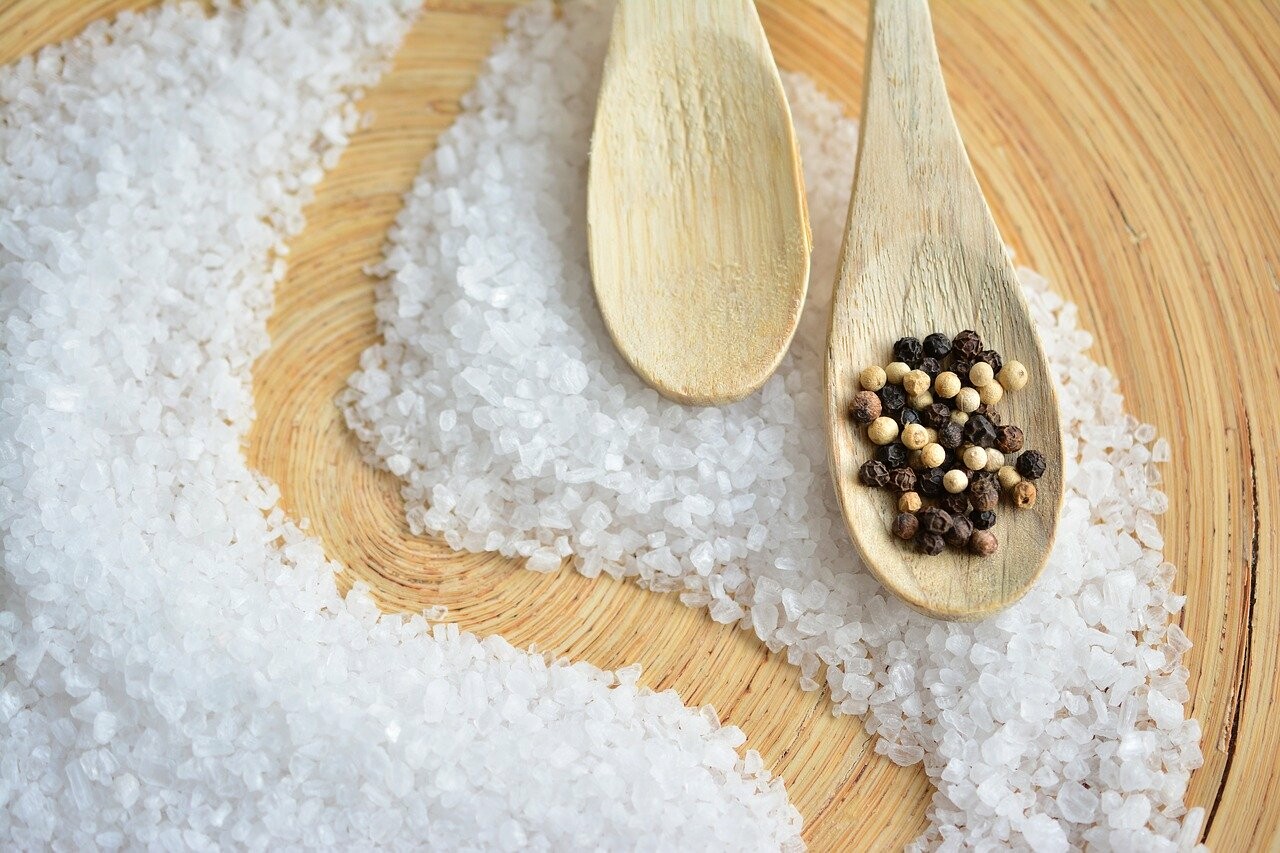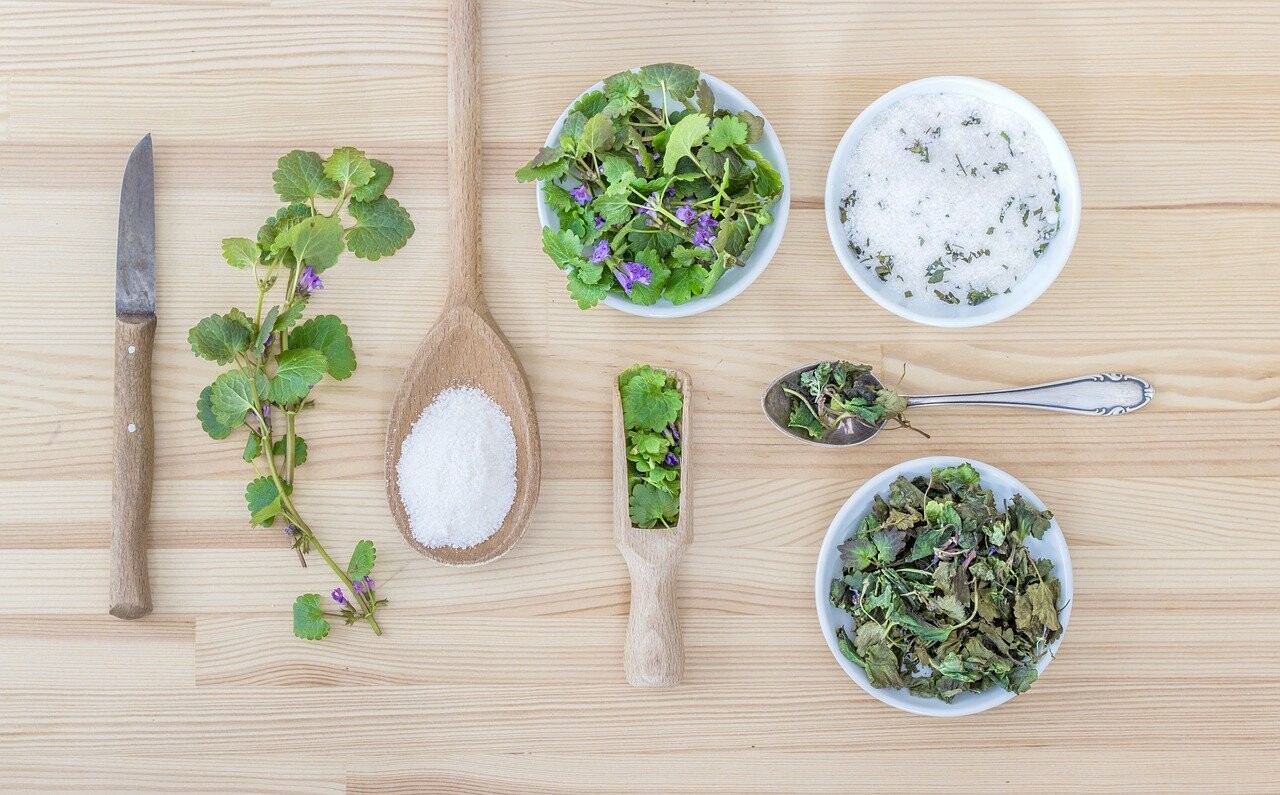
by Elisa Travisono
Pure salt—sparkling white, free-flowing, cheap, and plentiful table salt—should be good for us, right? After all, it’s pure.
But salt manufacturers refine natural salt sources, which contain all the trace minerals a body needs, into a product that has just two elements: sodium and chloride.
A quick look at health statistics shows that over-consumption of sodium chloride may lead to hypertension and cause heart attack and stroke, as well as bloating, edema, and inflammation.
“Excess salt in the American diet kills 150,000 people each year,” says the Center for Science in the Public Interest. A typical diet includes 4,000 milligrams of sodium each day, about twice the recommended amount.
Have you noticed that the more you use salt, the more salt you want to use? The body doesn’t “understand” the presence of sodium chloride by itself, without the complete mineral profile that was present in the original, natural source. So even though you are using that pure salt, the body still craves the mineral-rich original version.
 Harvesting Salt by Quang Nguyen vinh / PixabayChemically, refined salt is sodium chloride, no matter what the source. Whether it’s from rock salt mined from underground, evaporated sea salt, or brine pulled from salt deposits, refined salt has been processed to remove essential minerals that our bodies require.
Harvesting Salt by Quang Nguyen vinh / PixabayChemically, refined salt is sodium chloride, no matter what the source. Whether it’s from rock salt mined from underground, evaporated sea salt, or brine pulled from salt deposits, refined salt has been processed to remove essential minerals that our bodies require.“Refined salt is basically dead,” said nutrition writer Willie Jones. To make table salt, mineral-rich salt is processed to remove everything but sodium chloride. Then chemicals are added. Anti-caking agents help deter clumping. Potassium iodide may be added to provide us with a source of iodine to prevent goiter. With the potassium iodide, a stabilizer is needed to prevent the compound from evaporating. The stabilizing additive is usually sugar in the form of dextrose or glucose. Yes, there may be sugar in your salt. It’s “dietetically insignificant,” says Morton Salt, in the amount of .04 percent.
Put refined salt in the same category as refined sugar and refined flour—a man-made, overprocessed product that is far from what our bodies need.
Instead, reach for unrefined sea salt. Seawater contains the entire spectrum of trace minerals that our bodies need. Sea salt, unrefined, contains that spectrum as well.
“Since refined salt is a toxic substance, there should not be any refined salt in anyone's diet,” says physician David Brownstein. “However, there is a great difference between refined and unrefined salt. I recommend only the use of unrefined salt in one's diet. This will supply the body with over 80 minerals that are useful for maintaining the normal functioning of the body.”
 Unrefined sea salts are offered from a variety of sources, ranging from 84 percent sodium chloride to 98 percent. So sea salt may tasteless “salty” than refined table salt. But what about iodine? The “recommended daily allowance” of iodine for adults is 150 micrograms per day.
Unrefined sea salts are offered from a variety of sources, ranging from 84 percent sodium chloride to 98 percent. So sea salt may tasteless “salty” than refined table salt. But what about iodine? The “recommended daily allowance” of iodine for adults is 150 micrograms per day.A quarter-teaspoon of iodized salt contains 100 micrograms. Unrefined sea salt usually contains much less iodine than that, depending on the source. Iodized sea salt is available, but make sure you are buying an unrefined product. Check your multi-vitamin: many contain the full amount of iodine needed.
Varying amounts of iodine are provided in the foods we eat. Include seafood -- ocean fish, shellfish or seaweed. Dairy products, egg yolks, many types of beans, and meats all provide small amounts of iodine.
Links:
www.celticseasalt.com
www.himalayancrystalsalt.com
www.deliciousorganics.com/Controversies/salt.htm
www.realsalt.com
www.saltworks.com
www.saltauthority.com
www.celticseasalt.com
www.himalayancrystalsalt.com
www.deliciousorganics.com/Controversies/salt.htm
www.realsalt.com
www.saltworks.com
www.saltauthority.com
SUBSCRIBE HERE
"Practice Wellness Daily," Dr.E







0 Comments